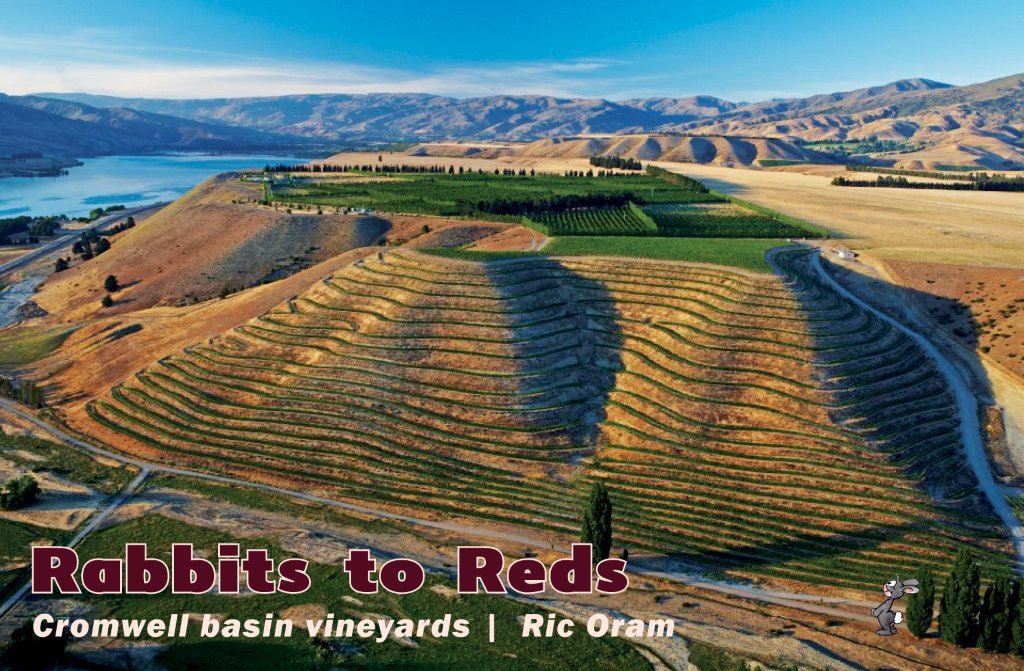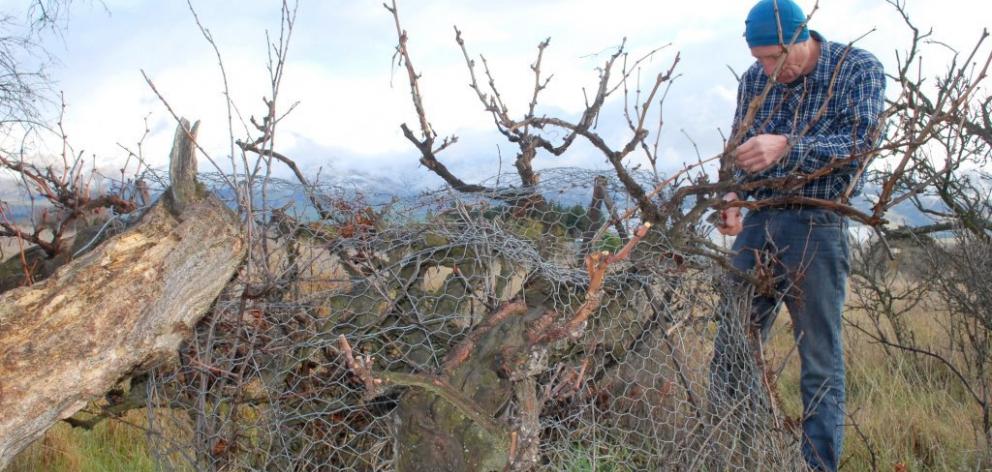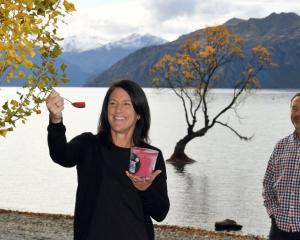
The Oldest
This old vine near Bendigo Station is thought to have been planted in the late 1880s by a gold miner. If so, it has survived up to 150 years of drought, frost, neglect and browsing by sheep and rabbits.
It is opposite Peregrine Estates on what was once part of the Bendigo mining township. It sits on a small parcel of land once cut from Bendigo Station, which was owned by the late Dick Lucas from 1947 until he sold it to John Perriam.
A daughter, Cheryl Lucas, who now owns the plot the vine is on, knows nothing of its history except it had climbed up an old fruit tree, now long gone, in what was once an orchard.
They had fenced it to protect it from the sheep and rabbits when Quartz Reef co-owner Rudi Bauer spotted it in 1996.
He took cuttings from it in 2014 and now 12 vines from it grow in the vineyard. They produce black-skinned grapes (''bird tucker'' says Rudi).

Robin Dicey (who created Mt Difficulty Wines in Bannockburn) also took a cutting to plant at home. He says it is an American hybrid table grape which does not taste very nice.
(The oldest authenticated vine is a Black Hamburg at Hampton Court Palace in England that was transplanted in 1769. But there are others in Europe thought to be more than 400 years old - and still producing.)
The Highest
The Cromwell basin is home to the highest vineyards in New Zealand.
Ladybird Hill, on the outskirts of Omarama, about 100km northeast of Cromwell, has for the past 20 years claimed, at 440m above sea level, to be New Zealand's highest vineyard.
Not for much longer: a couple of Bendigo vineyards will beat that when they start producing.
Blue Mine (named after an area of blue gold-bearing quartz mined there in the old days) is 465m above sea level at its highest boundary. It was planted in 2017 by multinational Constellation.
Next door is Lamont Wines' Craig Gasson's Zola vineyard - 445m at its highest point - which was also planted in 2017.
They are regarded as an extreme height for vineyards in cooler latitudes because for every 100m of altitude, the average temperature drops by 1degC. However, when the sun dips below the ranges to the west at the end of the day these two are bathed in sunshine (and are therefore hotter) for an hour or more than the vineyards, now in shade, about 200m below on the flats.
The region's high latitude exposes the grapes to more ultra-violet light, which enhances their flavour.
Confusing the birds
In summer, the green vineyards turn white, sometimes black, as nets go over them to keep the birds from spending the summer gorging themselves.
Not that they eat a lot; rather indiscriminately pecking for a beakful of sugar. Once punctured, a grape starts to rot, gradually infecting its bunch.
The nets go on weeks before the grapes are sweet enough for the winemaker because the birds instinctively know there is already enough sugar for them.
Bannock Brae vineyard owner Crawford Brown wondered how the birds knew when the grapes were ready: they could not smell the sugar; it could not be the change in colour as they ripened because some varieties remained green-skinned. They could not see the sugar.
Or could they?
In the deep recesses of his brain was the knowledge from university days that light shining through the dextrose in a sugar solution refracts. The more sugar, the more the light bends. Perhaps birds could ''see'' the sugar after all.
He also knew that some birds navigate by using the angles of polarised light that humans cannot see.
''If I can bamboozle them by constantly varying the angle of that light, they might think there's no sugar there,'' Crawford thought.
He went to a local engineering firm and had a floodlight built on a tall pole with a small electric motor to rotate a polarised filter.
In the summer of 2010, just before the grapes were attractive and leaving some rows unnetted, he turned it on the first time to test it.
It was about that time in the afternoon when a neighbourhood hawk did a pass over the vineyard and, sure enough, here it came, turning into the area covered by the beam from the floodlight:
''It went straight up into the sky, stalled and fell like a stone to the ground. I was horrified - it was not meant to hurt them! After about five minutes it flew away.
''Maybe I'm on to something here.''
The uncovered rows survived summer.
''Everyone thought we were mad, but the pickers were gobsmacked by the quality of the uncovered grapes'' - and, now, the whole vineyard is left uncovered.
Richard Guthrey, of Remarkable Wines, has a 4.5ha vineyard across the fence. He was initially sceptical, but was impressed by its effectiveness and quickly agreed to a ''try it before you buy it'' deal. His vineyard is now net-free.
It is also cheaper. New nets, which can last for 10 years, cost up to $7500 a hectare and up to $1000 a hectare each season to put on and take down. Crawford calculates that his system is only 15% of that.
The innovation also means gas-operated bird scarers that scream or go bang are not needed. Their noise is intrusive for residential neighbours. (So much so that John Perriam has put a ''no bangers'' condition on the sale of his Bendigo land for vineyards.)
Crawford has since been testing his system on blueberry farms, cherry orchards, kiwifruit orchards (which are most susceptible to bird damage during spring bud burst), olive groves and on vineyards in Auckland. They are reporting less bird activity and less damage.
He has not finished yet: the system is being trialled over a domestic swimming pool to prevent fouling, and he sees a potential use for such things as airports, rubbish dumps, fish farms and offshore platforms where birds are a nuisance.
Crawford is not sure why his system works. Nor do scientists around the world. Some think that even fish might use polarised light to navigate.













